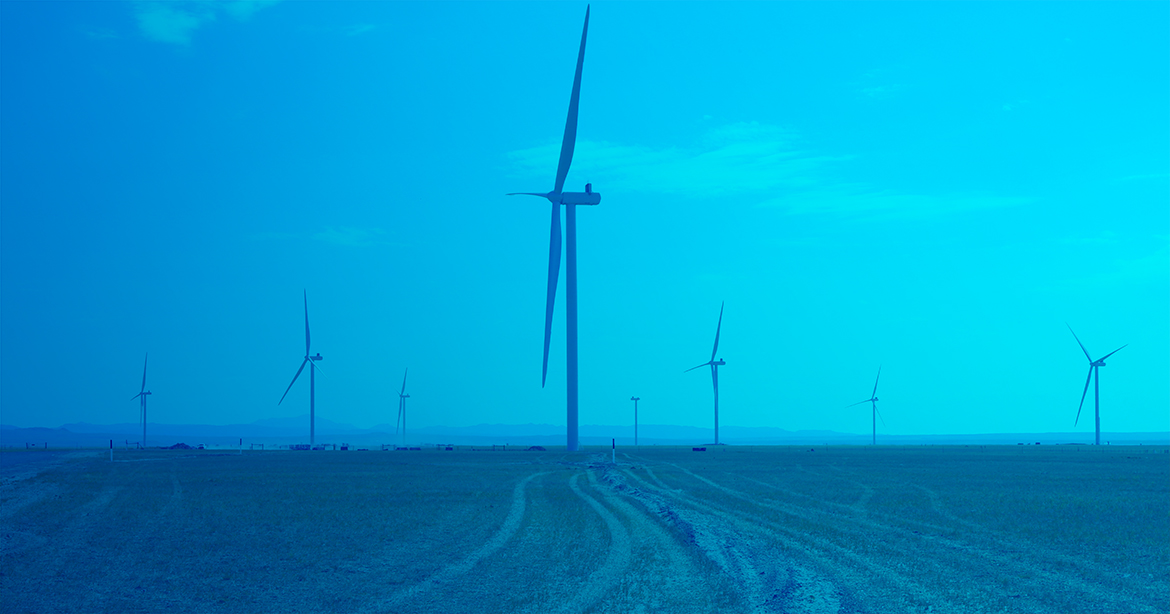
For as long as wind energy has been providing power to our nation’s grid, the magnitude of the average wind facility has been steadily growing. Mega wind projects, those sized in the range of a thousand MW or more, are seen as the next chapter of wind energy but also present a unique set of challenges for developers and builders to manage.
Improvements to turbine technology and transmission infrastructure, along with a growing demand for energy, have driven wind projects from an average 90 MW size just ten years ago1 to over 180 MW today. Meeting our nation’s energy demand while swiftly working to achieve established clean energy goals is challenging yet energizing to the minds in renewable energy. "Mega projects", ranging in size from 800 MW to 4,000 MW or more, have emerged as a solution to this challenge. However, the complexities involved in developing and constructing mega wind projects set these apart from typical wind projects, which requires tighter alignment among all project stakeholders to overcome hurdles and execute a successful project.
Access to transmission line infrastructure has long been a constraint in the industry and creates development hurdles and limitations for wind projects of any size. This is exacerbated by the fact that after decades of rapid industry growth, many of the prime wind energy generation sites within the United States have now been developed. Sites today are typically more challenging and further away from transmission or load centers. However, a theory was recently proven at the Western Spirit Project in New Mexico2 that has been contemplated for years – if a project can be developed with enough scale of power generation, it is much more economically feasible to have a long-distance transmission line constructed if needed. This demonstrated that projects are not dependent on the local utility transmission line infrastructure, but instead can transport the power long distances directly to meet load demand. Ample greenfield space in rural areas coupled with these recent breakthroughs will allow mega wind projects to send power to those locations with heavy power needs.
With increasing transmission line distance, projected electricity loss through long-distance transfer in AC (alternating current) lines can be an economic roadblock. A solution to this is to utilize an HVDC (high-voltage direct current) converter station at each end of the project’s transmission line, which is a specialized substation that converts electric power from AC to DC (direct current) or vice versa. When a wind facilitys standard AC power is converted to DC form for transport by way of HVDC converter stations, energy line losses are greatly reduced. When losses are minimized over several hundred miles of transmission line, the entire system not only becomes much more economical, but has greater efficiency, reliability, and longevity. The added cost to build these HVDC converter stations must be factored into the equation, but this approach has proven to be worth the investment and is now increasingly common for projects with transmission lines of 300 miles or longer.3 A breakeven study can be performed to evaluate if an HVDC converter station method is the right solution for a given mega project.
Through Mortenson’s experience building HVDC converter stations, such as on the BiPole III Project in Manitoba, Canada, we understand the unique requirements when constructing large, remote projects that are extremely complex. Labor forces in sufficient numbers, with the right qualifications, are difficult to assemble in rural areas. Worker camps may be necessary to support this large labor force when local housing is not available. When evaluating commodity vendors, their capacity and capabilities may impact selection or drive the need to divide a scope across multiple vendors. Finally, the structural design of a long transmission line can be more complex than a standard transmission line, and the designer and constructor must have the resources to execute this properly.
In constructing a mega project, the normal quantities of civil site preparation, electrical infrastructure, and turbines to be erected scale up and become staggering. Site logistics and just-in-time delivery coordination become critical not only with these substantial quantities, but with the ever-larger turbine equipment. The EPC (engineering, procurement, and construction) provider must have a plan for seamless integration amongst the projects teams and scopes throughout every stage.
The construction schedule of such projects will also span years rather than months a successful one will also follow a carefully-planned schedule with safety and feasibility as the highest priorities. A plan that smoothly flows from one phase to the next and allows for grid connection and partial plant operation as soon as feasible will be crucial in project economics.
It is paramount for wind project developers to engage with an EPC provider as early as possible. When engaged as a partner in the development and pre-construction process, the EPC provider can provide maximum value and support as major decisions are made to avoid unnecessary costs. The EPC provider can also provide constructability feedback on a preliminary layout or assist in developing this, as well as review environmental, hydrological, or wetland studies to ensure the layout will be constructable and approved by the JHA (jurisdictions having authority). Furthermore, an early partnership is the ideal opportunity for innovative ideas to be considered, ultimately further reducing inefficiencies before project metrics are finalized.
For more information and to discuss your project's needs (from small to “mega” sized), we invite you to connect with our team by visiting www.mortenson.com/wind.
Sources:
1 Wood Mackenzie, https://www.woodmac.com/ – North American Wind Energy Market Outlook January 2022
2 Pattern Energy, https://patternenergy.com/projects/western-spirit-wind/
3 POWER Mag, https://www.powermag.com/benefits-of-high-voltage-direct-current-transmission-systems/